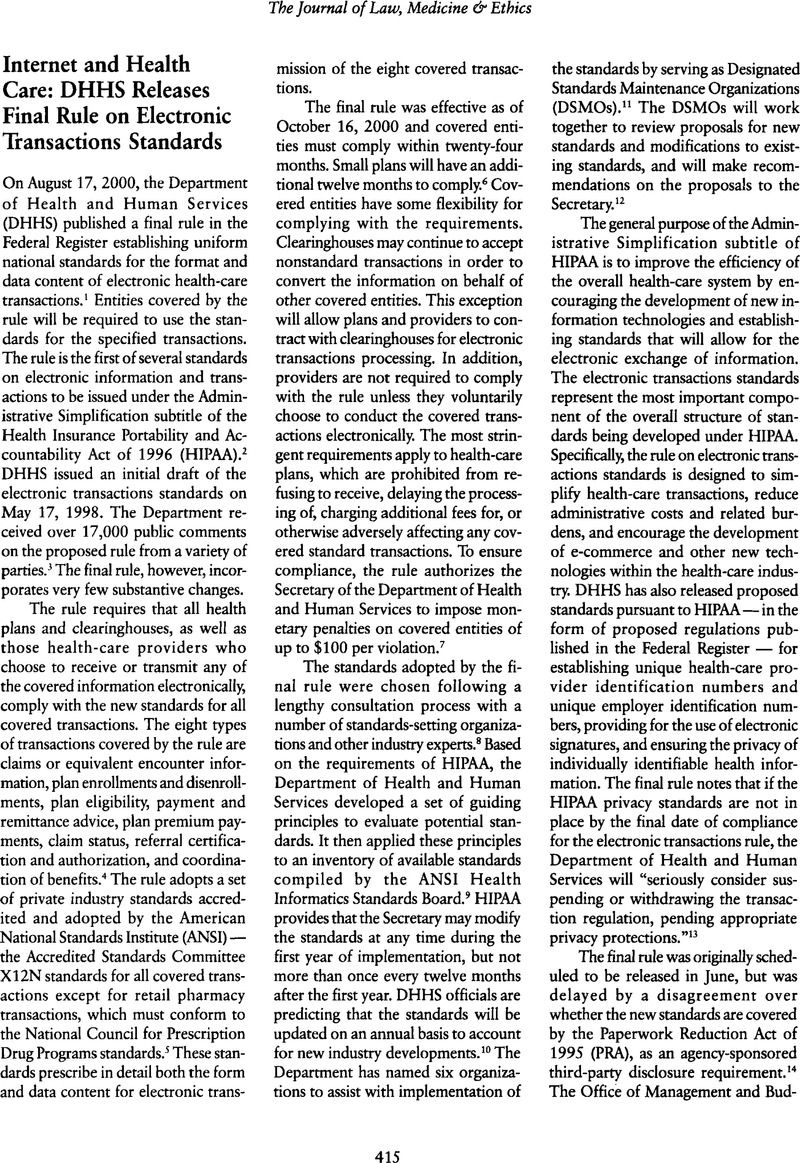HIPAA requires the Secretary of the Department of Health and Human Services or the ANSI-accredited organization that authors the proposed standards to consult with several organizations before adopting the final standards—the National Uniform Claims Committee (NUCC), the National Uniform Billing Committee (NUBC), the Workgroup for Electronic Data Interchange (WEDI), and the American Dental Association (ADA). (All of these organizations are private-sector standards-setting organizations.) In addition, HIPAA requires that the Secretary rely on recommendations from the National Committee on Vital and Health Statistics (NCVHS) and consult with appropriate federal and state agencies and private organizations. (The NCVHS is a public advisory body charged by statute with providing advice and assistance to the Secretary in the area of health data and statistics.) DHHS received input from other government agencies and private industry officials through outreach and consultation, including public meetings. Representatives of the health-care industry also testified before the NCVHS Subcommittee on Health Data Needs, Standards, and Security, and DHHS reviewed the testimony. See “Health Insurance Reform,”
supra note 1, at 50,313–314. See also
“Frequently Asked Questions,” supra note 6.
Google Scholar